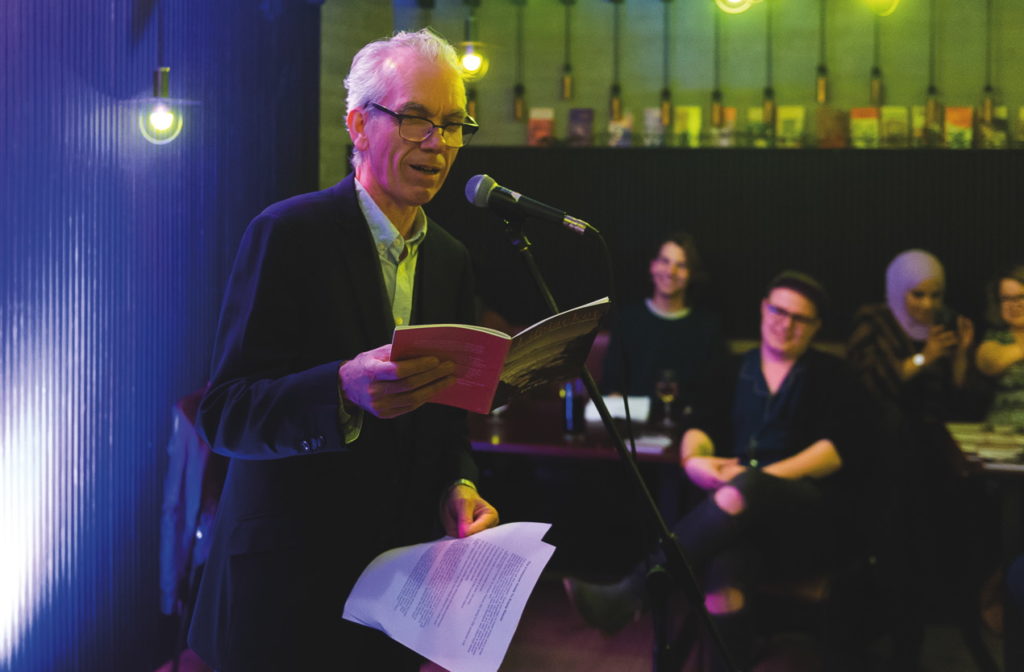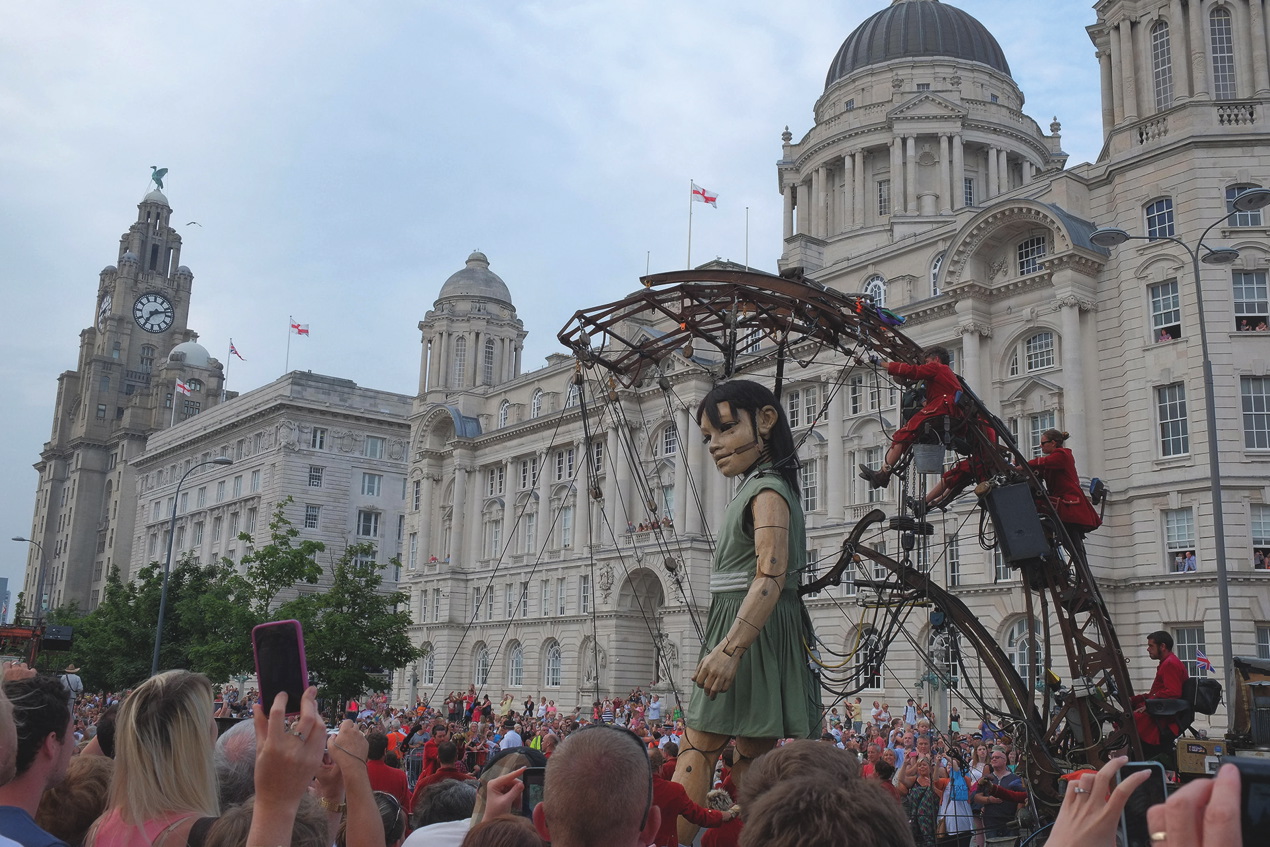Young at heart
Jeff Young, writer for TV, theatre and radio, lecturer and observer of half a century of change in Liverpool, talks about his new book and his hopes for a more people-focused city
You sometimes know you’re enjoying a book when you’re thinking as you read about the people you know who would love it.
Such is the case with Ghost Town, a love letter to a Liverpool that once existed, or sort of still exists, a wounded city with an unquenchable spirit: there’s something here for anyone who cares about the city and its people, or even any city.
The release of the book has been battered around by lockdown – publication came days before the UK went into lockdown, which meant that not only did booksellers close, but distribution warehouses too. A launch at Waterstone’s Liverpool was canned, festival appearances binned.
“It’s doing OK, despite all that,” says its author, Jeff Young. “There’s been a lot of positivity on social media and various online reviews, but it is a bit frustrating not being able to get out and talk about the book. Hopefully as lockdown eases, more people will be able to get hold of it in shops.”
“It’s problematic when people talk about Liverpool as a European city. It’s a northern city that’s done its best.”
The billing for the book describes it as a search for memory, the self, the city and the muse. Young’s a man who likes to wander his home city, as he did with his mother as a child, just thinking, picking up details in the buildings and the life around him. The book’s name comes from the city seen through his eyes being haunted by figures from the past, friends, family, the famous.
Young, a senior lecturer in creative writing at Liverpool John Moores University’s screen school, has a CV as long as your arm of TV, theatre and radio writing credits. The book sprang from a series of essays written for Radio 3, 15-minute musings on the music, art and places that inspired him.
Three of these five were roughly “about” Liverpool, and after he put his head together with independent publisher Little Toller, these were joined by another 14.
“They went from essays, to chapters, to memoir,” he says. “I’m trying to keep that sense of my connection to the city, or what it means to me and my family – my parents, grandparents and my sister Val, who died during the writing of it and became the heart and soul of the story.”
There’s history of the place here, some notable parts of the city – Mathew Street and Oriel Chambers – and also musings on the unsettling nature of post-war “edge” areas people were moved to. But equally it’s a story of the self, of Young’s growing up and trying to make sense of a confusing world.
“The feedback received so far has been right across the board,” he says. “A lot of people identify with that feeling for place, then others empathise with loneliness – there’s something that resonates about being alone in a city, not an alienating city, but a city you have a powerful feeling about. A lot of people have an unspoken connection with the mood and atmosphere of a place and what it means for a person growing up, wherever that is. These can be hard things to articulate but hopefully it strikes a chord.”
Several of the chapters touch on Young’s childhood, and his dislocation from the bustling streets around Everton’s Goodison Park and the strange new hinterland of Maghull on Liverpool’s northern fringe.
He says: “That displacement really affects lives – it’s a wrench. Because of a planning department decision, places are erased and people transplanted. You have to learn a new territory. Being uprooted like this has a psychological impact and again, it’s a theme a lot of people identify with.”
This was also Liverpool’s time though, a time Allen Ginsberg described the city as “the centre of consciousness of the human universe” and decided he had to see it: Beatlemania, the rise of the counter-culture, the Mersey poets.
Young says: “Outside of London, Liverpool was the main city for pop culture, and we were aware of it. People elsewhere couldn’t buy records in Brian Epstein’s shop. It was one of the few post-war periods when there was a sense of optimism about Liverpool, followed by the terrible decline of the 1970s.”
The modernisation of the city is a recurring theme, and the reader is left in no doubt as to Young’s feelings on certain jarring additions or alterations to the cityscape.

“Liverpool has been badly treated, often by the people who are supposed to be looking after it. What has been done with the Futurist [a much-loved former cinema on Lime Street] is an absolute disgrace – the powers that be speak up for it but I’m convinced they’re lying. This isn’t a matter of it appealing to a particular taste – it’s just clearly mistaken.”
When we speak, the current bête noire is a proposal, since granted approval, to install a 400-metre zipwire between St John’s Beacon and the listed Liverpool Central Library. More than one protester has used the term Disneyfication.
Young says: “This will pass straight over St John’s Gardens, the only truly quiet area of the city centre. It’s just a tawdry reduction, seeking cash at the expense of treating the city with dignity. At several points recently, Liverpool’s UNESCO World Heritage status has been threatened, but even that doesn’t seem to make people think: Hold on, maybe we should rethink things.”
Is there enough traction, amid this time when people are at least talking about slowing development and reducing car use in cities, for someone to corral those who care into an effective opposition?
“Maybe there is. I add my name to letters and petitions, but things don’t seem to change. It’s not about nostalgia, or a sepia-tinted view, but wanting the city to be the best it can be. You can’t do that by diminishing it. But it’s all about business, isn’t it?”
Young’s not completely down on modern Liverpool, by any means – parts of the public sector machinery are still doing good things for the city, while he agrees that the city does continue to support the arts better than many of its counterparts, certainly at the glitzier, large-audience end of the market.
“Liverpool City Council has supported the arts, definitely, especially when it’s something like the Giants [the events put on by the Royal de Luxe street theatre company}. I think the Giants are great, and the council are very good with such things that drive tourist numbers. They’ve also supported theatres with investment, but at the same time they mishandle music venues – Parr Street Studios being the latest.”
Plans for this venue’s redevelopment, unsurprisingly into a hotel and apartments, were submitted in April, to the dismay of many who feel Liverpool’s debt to small performance spaces needs hardly be stated.
So what would be on Young’s wish list for Liverpool as we look to emerge into the post-Covid-19 world?
“There’s a lot of talk about what to do with urban spaces now, and although I welcome thoughts on rethinking public space and cycle lanes, it shouldn’t be a temporary bandage on a wound, but a legacy for the future.
“Restricting traffic in the city is a good thing. More greening of the city should be happening. Also, thinking of the city from a child’s perspective – give them spaces to play and to develop a connection with the city. A city shouldn’t be just about shopping and dining out. It should be about life on the streets, cultural vibrancy.
“I find it problematic when people talk about Liverpool as a European city – to me, it’s a northern English city that’s done its best. I mean, Liverpool hasn’t even got a street market. We have the opportunity to reimagine the fabric of the city.”
The arts sector should play a role in that, he says. “We need to rethink things like outdoor cinemas, outdoor theatre, learn from Europe – you’d be watching films in the street at this time of the year in Italy. We are hampered with the weather a bit, though.”
What might come next? Young’s working on the idea of a Ghost Town companion volume, or part two – “it will be the same, looking at place and memory and how we use that to think about the present and future.
“I’m really proud it’s with an independent publisher. It’s possible to tell stories without it being part of the big corporate machine. That embrace of independents is important for a city too.”
Liverpool film-maker Terence Davies looms in the book as an influence, while there’s also mention of Paul Simpson, singer with cult local group The Wild Swans. “A lot of Paul’s songs, such as My Town, tap into what I’m trying to say. I’m interested in that romantic poets aspect – local poet Matt Simpson, although I never met him.” Other inspirations include William Burroughs and a frontman and lyricist who also reaches into Burroughs for inspiration, Mark E Smith of The Fall.
Young says: “Mark E Smith’s use of language was incredible – he wasn’t afraid to be ugly. With a lot of these, there’s that thin line between happy and sad. That’s the tightrope I’m trying to walk – I like the sadness. It’s pouring with rain in Liverpool today and the city never looks better.”
Main image: Royal de Luxe Giants in Liverpool, 2014

Leave a reply
Your email address will not be published.